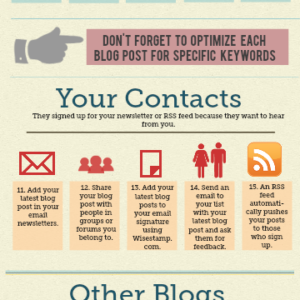Creating a blog to run alongside your photography website or portfolio is a great way to allow clients to see more of your work, style, and thought process, as well as to solidify you as a professional photographer or photography business. Creating blog content, however, can be quite hard, and developing a blog content strategy is a surefire way to improve the long term quality of your blog.
What’s a Blog Content Strategy?
A blog content strategy is basically a blueprint for how your blog will develop over time. If you already have one, this guide will go over some different ways in which you can improve it. On the other hand, if you currently don’t have a blog content strategy for your blog, this article will illuminate some of the starting points and guidelines that you should keep in mind while developing your own blog content strategy.
Creation and Publications Schedules
One of the biggest things missing from the majority of content strategy development for creative endeavors, and specifically blogs, is creation and publication schedules. One of the easiest ways to develop and grow as a blog writer, and to do the same for your audience, is producing content on schedule. You want your audience to know when content is coming out, and forcing yourself to stick to a deadline schedule is the best way to both improve at working under pressure and as a writer.
I recommend a two-pronged approach to schedule; separate creation and publication schedules. These are as simple as they sound: a creation schedule is when your final draft or publication-ready draft needs to be complete. The Creation schedule can also incorporate other details, such as: When will the first draft of this post be done? When will I have all the images embedded for this post done? This gives you a clear track for when you need to have free time in your schedule to get this work done.
Now, the publication schedule is more of a calendar. It tells you when you need to be publishing new content. Let’s say you start a blog with the goal to publish at least once a week. When is the best time to publish? This depends a lot on analytics, but choose a sensible starting time when you could expect readers to want to go to your blog, maybe a weekday morning. If your blog develops into multiple posts a week, consider changing your publication schedule to be a longer post at the same time each week, and then a shorter post or one in a different genre at a different point that splits the week in your publication schedule in half.
Why have separate schedules? Separate creation and publication schedules allow several things to occur. The first is going to be a slight backlog to publication, a rainy day fund of blog posts, if you will. This means that if you are going to take a vacation, you can have a creation schedule planned that covers that time. Secondly, these separate schedules can also protect work that you haven’t necessarily sent yet. For example, let’s say you are a portrait photographer, and your client knows that you will be writing a blog post about the images. You want to make sure that before you post this blog post, your client has received their images, and you have completed any second round or final edits that they may request. While your original creation schedule may have allotted time for this to happen, your client may have been non-responsive, and now your creation schedule is set back. This means that, because of that mini backlog of posts you have, you can continue to have content come out.

Different types of Content for your Photography Website
Your blog strategy needs to be diversified – not necessarily in the way that you think. While posting a variety of content may be the correct strategy for you, many blogs do amazing work because they focus solely on one type of content. By diversifying content, I don’t mean switching genres, I mean learning about evergreen and timely content, and using that understanding to your blog’s advantage.
So, what makes evergreen and timely content different? As simple as it sounds, evergreen content is content that can always be published to a similar effect, while timely content is content that will do much better if it is published at a specific time. A good example of this would be a post about how you captured photos of an event – such as a concert, or holiday event. A lot more clients and photographers are going to be interested in Christmas content near the holidays, and a lot more people at a concert are going to want to see photos from that concert in the days thereafter.
Now, let’s tie that back into your creation and publication schedules. Evergreen content isn’t tied to specific publication dates you have in mind, which means you can take a more relaxed approach to that content relative to timely content. Timely content needs to be out as soon as possible; think about how fast articles are posted both after and during sporting events. Those articles need to get out as fast as possible, often meaning that as a photographer for such events I am editing and publishing pictures while the teams are still on the field.
Additionally, timely content tends to do better than evergreen content. The reason for this is simple: timely content naturally has a built-in hook when published at the right time. This is not today that evergreen content can never surpass timely content: most books are going to be evergreen. This is to say that timely content often can pull more readers onto your website in a shorter amount of time, leading them to discover more of your evergreen content that they may not have otherwise been able to find.
What does your readership want?
Last, but certainly not least, is the importance of tailoring your content to your leadership. As you build a reader base, your content needs to reflect what they want to learn about. This is the reason that so many online blogs, vlogs, etc. that are photography-related create yearly “What’s in my bag?” type videos: the audience wants them. These videos are not that fun to create and aren’t creatively fulfilling, but they serve some part of the audience.

I am not advocating you to start a gear only blog, as that market has been saturated over and over. If you currently have a relatively small readership, those readers are there because they like your content, so what parts of that content do they like? Ask your readers for feedback and advice in the form of pitches. One of the hardest parts of content creation for a blog, as you progress as a writer and self-editor, is going to be coming up with content for those schedules you created. Keep a separate spreadsheet with different pitches readers have come up with, and see if those come up again, and again, and if that is something that you need to tackle.
Being in tune with the people reading your content as you continue to blog is the most surefire way to be making content that people will want to read. As basic and cliche as that sounds, sticking to what makes your content your content will continue to attract new readers with new ideas for you to develop over time.
Lastly, take every suggestion with a grain of salt. As I’m sure you’re aware of, the internet is an interesting place with a whole lot of people, and what might initially sound like a good and well-intentioned idea could be the opposite. Don’t fall into the trap of cyclical and boring content because it is what a few dedicated readers want; do so alongside new ideas that you have, as it is your original ideas that brought the readers there in the first place.


